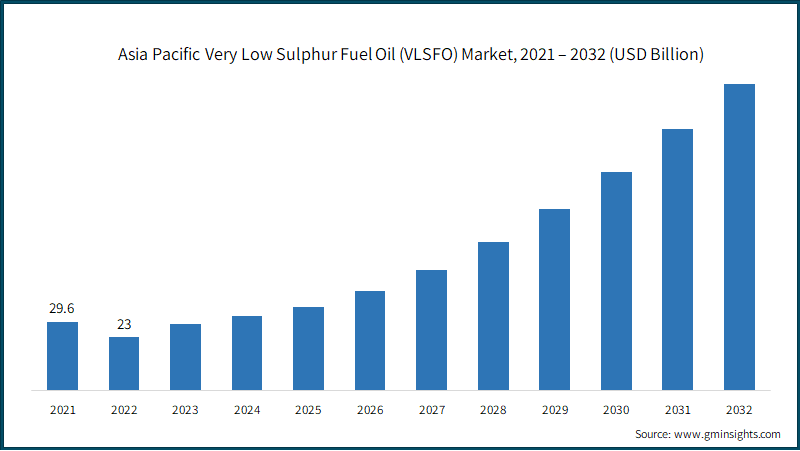Home > Energy & Power > Oil and Gas > Bunkering > Very Low Sulphur Fuel Oil (VLSFO) Market
Very Low Sulphur Fuel Oil (VLSFO) Market Analysis
- Report ID: GMI6304
- Published Date: Jul 2023
- Report Format: PDF
Very Low Sulphur Fuel Oil Market Analysis
The increasing focus toward sustainability and carbon emissions along with growing interest in alternative fuels and technologies will propel the industry growth. The availability of a large number of bunkering ports and increasing port calls across the Europe and Asia Pacific will propel the business outlook.
The rising retrofitting activities along with the installation of low sulphur propulsion technologies are further accelerating the product demand. Improved standard of living along with rising disposable income will bolster the demand for VLSFO. The increasing number of seaborne passengers along with the rising count of local ports will further enhance the industry outlook. The growing government spending on the construction and deployment of new navy vessels including submarines, aircraft carriers, and other naval ships will propel the product demand.
 <
<Asia Pacific very low sulphur fuel oil market size is set to reach USD 131.9 billion in 2032. The implementation of the International Maritime Organization's (IMO) 2020 regulations has led to surging demand for VLSFO in the region. The shipping industry is subject to stricter sulfur limits, augmenting the need for low sulphur fuels as the primary marine fuel. The regional demand is primarily influenced by proximity to refineries, transportation infrastructure, local regulations, and demand patterns.
The region is home to several key trading hubs including Singapore, Hong Kong, and Tokyo, which serve as major supply & distribution centers. These trading hubs offer competitive pricing and provide access to VLSFO from various sources. The presence of multiple suppliers and traders fosters market competitiveness and offers buyers options in terms of pricing and quality. Additionally, the changing global oil prices, stringent regulations, geopolitical events, and shifts in trade patterns will propel very low sulphur fuel oil market growth.
The rising demand for operationally reliable ships with reduced emissions will boost the demand for VLSFO across Europe. The regional market is diverse and dynamic. Factors, such as proximity to refineries, transportation infrastructure, and local demand patterns, influence the pricing and availability of product. For instance, regions with a higher concentration of refineries may have better access to product supply, while regions with a limited refining capacity may face higher prices due to transportation costs. Moreover, the increasing demand for comfort & luxury, the rising requirement for reliable engines, the expanding seaborne transport industry, and economic stability are some key aspects further propelling the adoption of low-emission marine fuel.

